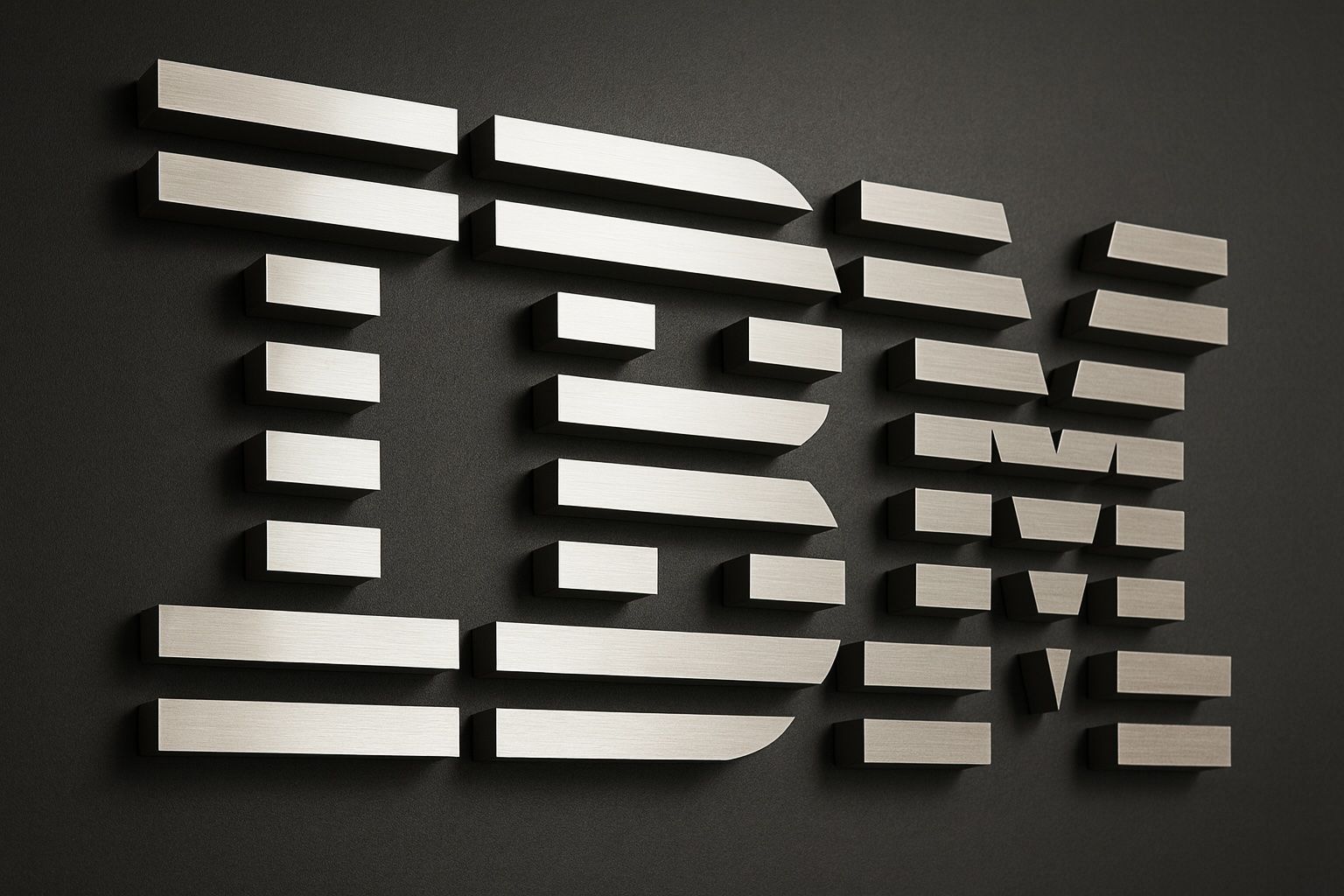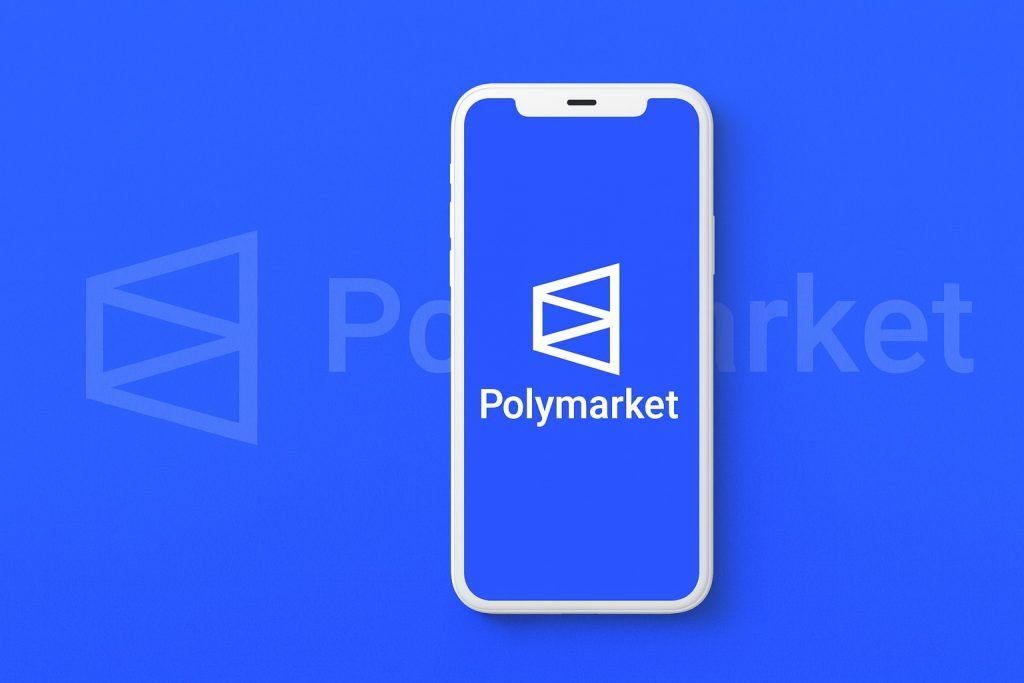- Stock Near Multi-Year Highs: IBM’s share price is hovering around $289 in early October 2025 – near its highest level in years. The stock is up roughly 28% year-to-date, far outpacing the S&P 500’s ~13% gain [1]. IBM’s market capitalization is about $265 billion, and its P/E ratio ~45, well above its historical average – a sign of big growth expectations [2]. IBM pays an annual dividend of $6.72 (yield ~2.3%) and has increased its dividend for 29 consecutive years, cementing its status as a Dividend Aristocrat [3].
- Solid Q2 Earnings (Q3 Pending):Q2 2025 results beat Wall Street estimates – revenue came in at $16.98 billion vs ~$16.6B expected, and adjusted EPS was $2.80 (also above forecasts) [4]. However, a very slight miss in the core software segment ($7.39B in sales vs $7.41B expected) spooked investors, and IBM shares dipped ~5% after hours on the July earnings release [5]. (This underscores high expectations: even a minor shortfall had an outsized impact.) IBM did not issue formal quarterly guidance, and Q3 2025 results are due on Oct. 22 – investors will be watching if momentum in AI and cloud translates into continued growth.
- Aggressive Pivot to AI & Cloud: Under CEO Arvind Krishna, IBM has reinvented itself around artificial intelligence and hybrid cloud services. It launched the Watsonx AI platform in 2023 and just unveiled Granite 4.0 (Oct 2025), a new family of open-source AI language models designed for business. Granite 4.0 uses a novel hybrid “Mamba + Transformer” architecture that cuts memory requirements by ~70% – allowing powerful AI to run on far cheaper hardware [6]. IBM reports booming enterprise AI demand, with a $7.5 billion “book of business” in generative AI projects as of Q2 2025 (up $1.5B in just one quarter) [7]. The company is hiring and training tens of thousands of staff in AI skills to meet this surge.
- Big Bets on Hardware & R&D: IBM isn’t just writing AI software – it’s investing heavily in the hardware and research behind it. In April, IBM announced a 5-year, $150 billion investment plan focused on U.S. production of AI-optimized mainframes and quantum computing systems [8]. Its latest mainframe, the z16 (launched 2022), includes on-chip AI acceleration and has been a surprise hit – many banks upgraded to z16 to run AI models (e.g. fraud detection) directly on their data [9]. This drove strong hardware sales and IBM has even committed to manufacture next-gen mainframes in the U.S., aligning with government incentives [10]. IBM is also a leader in quantum computing with the world’s largest quantum cloud network and over 200 client and partner organizations. In one real-world example, HSBC achieved a 34% improvement in bond portfolio optimization using IBM’s quantum systems [11].
- New Partnerships Fueling AI Growth: IBM has been striking high-profile partnerships to expand its AI and cloud ecosystem. On Oct 1, IBM announced a collaboration with AMD to build one of the most powerful AI supercomputing clusters for Zyphra, an AI startup [12]. IBM Cloud will host a massive array of AMD’s new MI300X GPUs for Zyphra to train a “frontier-scale” open-source AI model (“Maia”), in a bid to challenge Nvidia’s dominance in AI hardware [13] [14]. IBM is also teaming up globally – for example, partnering with Japan’s SCREEN Semiconductor on next-gen chip manufacturing processes [15], with India’s BharatGen to co-develop AI models in local languages [16], and even with Meta: IBM’s watsonx platform now offers Meta’s open-source Llama 2 model for businesses to customize [17]. In a more playful use of AI, IBM worked with ESPN to generate AI-driven fantasy football insights for fans, showcasing the breadth of its enterprise AI applications [18].
- Acquisitions Boost “AI Plumbing”: Alongside partnerships, IBM continues to acquire companies to fill gaps in its AI and cloud portfolio. In 2025 alone, IBM agreed to buy DataStax (a specialist in NoSQL databases built on Apache Cassandra) for a reported ~$1.6 billion [19]. This acquisition, announced in February, brings an “AI-ready” cloud data platform into IBM’s fold – important for powering AI applications with scalable data infrastructure. IBM also acquired Seek AI, a startup focused on natural language queries for databases, to enhance its AI-driven analytics tools [20]. These are part of over 30 acquisitions since 2020 (mostly smaller, “bolt-on” deals) under CEO Krishna, targeting cloud, data, and automation niches. Notably, IBM’s $34B Red Hat acquisition (2019) remains the cornerstone of its hybrid cloud strategy, providing the OpenShift platform that allows enterprise apps to run on any cloud or on-prem environment [21].
- Wall Street’s Take – Cautious Optimism: Analysts have a mixed view of IBM after its big run-up. The consensus rating is roughly Hold, and the average 12-month price target is around $280 – essentially in line with the current stock price [22]. Price target estimates range from about $200 on the low end to ~$325 at the high end】 [23], reflecting uncertainty about how much upside is left. Some bulls believe IBM’s AI and cloud pivot can drive further gains – for instance, Goldman Sachs recently raised its target price from $270 to $310 [24], and Wedbush went even higher to $325 [25]. But skeptics note IBM’s valuation is rich and its growth, while improved, is still modest compared to faster-growing tech peers.
- Investor Sentiment & Ownership: IBM’s shareholder base is dominated by long-term institutional investors, which own roughly 59% of the company’s stock [26]. In fact, the largest holder, Vanguard, slightly increased its stake in early 2025 – adding ~1.3 million shares to own 10.0% of IBM (about $23 billion worth) [27] [28]. Insiders have generally been holding onto their shares: only ~30,000 shares were sold by insiders in the last two years [29], and one board director (David Farr) made a notable insider buy in February 2025 – purchasing nearly 300,000 shares at ~$249 each, signaling confidence in IBM’s direction [30]. Overall investor sentiment has improved as IBM has transformed itself, but expectations are now high.
Stock Performance: Riding High After Years in the Doldrums
IBM’s stock has enjoyed a remarkable resurgence in 2024–2025, after spending much of the prior decade languishing. The share price sits near a 52-week high (around $296) with no major pullback so far this year. In late September, IBM briefly hit an intraday peak close to $296 when news of a quantum computing breakthrough (with HSBC) sparked a one-day 5% rally [31]. As of the first week of October, IBM trades just a few percent shy of that high, reflecting sustained optimism.
This rally marks a dramatic turnaround. Year-to-date, IBM is up ~28% (through early October) [32] – a huge move for a mature tech company – compared to about +13% for the S&P 500 over the same period [33]. Over the past 12 months, IBM stock has climbed roughly 30–40%, and it has about doubled in the last three years [34]. In fact, IBM stock even notched all-time highs earlier in 2025 [35], a milestone that would have seemed far-fetched a few years ago.
What’s driving the surge? A few factors stand out: First, IBM has delivered better-than-expected financial results recently (after a long spell of flat performance), indicating its turnaround strategy is bearing fruit [36]. Second, there is genuine excitement around IBM’s new initiatives in AI and cloud – areas with high growth potential that IBM previously lagged in. Finally, investor perception of IBM has shifted from viewing it as a stagnant “old tech” stalwart to a company with a credible growth story. This “re-rating” by the market is evident in IBM’s valuation: the stock now trades around 45 times trailing earnings, a multiple more typical of growth-oriented tech firms, whereas IBM’s P/E for much of the 2010s was in the low teens [37]. In short, investors are willing to pay up for IBM now that it’s showing momentum in cutting-edge fields.
The flip side is that expectations are high. With the stock at elevated levels, any missteps could be punished. One portfolio manager noted that, after such a rally, “there’s just not a lot of room to miss” on execution [38]. We saw evidence of this in July: IBM’s Q2 earnings beat estimates, but a tiny shortfall in software revenue led to a 5% after-hours stock drop [39] [40]. The market currently has perfection priced in – a theme to watch in upcoming quarters.
Financial Results and Trends
IBM’s recent financial performance has improved, bolstering the stock’s rise. In Q2 2025, as noted, IBM beat consensus expectations on both the top and bottom lines: revenue of $16.98 billion (up ~7.7% year-over-year) edged past estimates of ~$16.6B, and adjusted earnings of $2.80 per share beat the $2.65 expected [41]. Notably, this revenue growth (~8%) is a substantial uptick for IBM, which had struggled with flat or declining sales for years. It suggests that IBM’s new focus areas (AI, cloud, and consulting) are offsetting stagnant or shrinking legacy businesses.
Drilling down into Q2: The Software segment – IBM’s largest unit – delivered $7.39B in revenue, which was slightly below forecasts ($7.41B) [42]. This minor miss was due to softness in IBM’s traditional transaction processing software (many clients delayed upgrades as they evaluated new AI mainframe capabilities). But other software areas still grew nicely (~10% YoY) [43], and IBM’s Infrastructure segment (which includes mainframes) actually beat expectations, with $4.14B in revenue vs $3.81B est., thanks to a spike in demand for the new AI-powered z16 mainframe [44] [45]. Meanwhile, the Consulting segment returned to growth – up 3% in Q2, ending a streak of five quarterly declines – as businesses resumed spending on digital transformation projects (especially those involving AI integration) [46] [47]. This balanced performance across divisions is encouraging for IBM’s turnaround story.
IBM’s profitability remains solid. The company generated $2.5B in free cash flow in the first half, and reaffirmed its full-year free cash flow outlook of $9.5B (important for sustaining that dividend) [48]. Net income in 2024 reached $6.0B, rebounding from an anomalously low $1.6B in 2022 [49] [50] (that dip was due to one-time charges like the Kyndryl spin-off). IBM’s margins have room for improvement, but the company has been tightly managing costs while shifting to higher-value offerings.
It’s worth noting IBM has stopped providing quarterly earnings guidance (a practice it halted in 2025), so investors are flying with less short-term direction [51]. However, IBM did affirm its full-year 2025 outlook for mid-single-digit revenue growth and about $10B in free cash flow. The upcoming Q3 2025 report (scheduled for Oct. 22) will be closely watched to see if IBM can keep its growth streak going. Analysts are looking for around ~$14.7B in revenue and EPS near $2.4 (the third quarter is typically a bit softer than Q2) [52]. Any commentary on AI deal pipelines, cloud signups, or macro IT spending trends will be key for the stock’s next moves.
Lastly, IBM’s dividend merits mention. The company’s dividend yield is ~2.3%, higher than many tech peers, and IBM has consistently raised the payout for 29 years [53]. The dividend costs about $6 billion annually, well covered by free cash flow. IBM’s ability to keep this streak alive – while also investing heavily in new technologies – reassures both income-focused investors and those looking for growth.
AI Initiatives and Strategic Direction
IBM’s resurgence is largely tied to an all-in strategic pivot toward artificial intelligence (AI) (along with cloud). After somewhat missing the early boat on cloud computing in the 2010s, IBM under CEO Arvind Krishna is determined not to miss the AI wave. Krishna often frames IBM’s role as the “enterprise AI” leader – providing AI that is trusted, secure, and tailored for business rather than consumer-facing AI. “We are transforming our operations using AI and helping clients do the same,” he frequently emphasizes [54].
A centerpiece of IBM’s AI strategy is the Watsonx platform (launched mid-2023), which is a comprehensive toolkit for AI development. Watsonx includes a model library (pre-trained models that clients can adapt), an AI studio for building new models, and robust governance tools to ensure AI is deployed ethically and transparently [55]. IBM has leaned into open-source AI – a notable shift from its older, closed Watson systems. For example, IBM’s new Granite models are open-source and can work alongside models from other providers. In an interview, CEO Krishna noted that many enterprises will use different AI models for different tasks, and IBM wants to be the integrator of those myriad AI models (whether they’re IBM’s own or third parties like OpenAI, Meta, or Mistral) [56] [57]. “We help our clients integrate. We meet them where they are,” Krishna said, positioning IBM as the neutral player that can tie together AI from everywhere [58].
In early October 2025, IBM unveiled Watsonx Granite 4.0, a major upgrade to its AI large-language models. Granite 4.0 introduces a cutting-edge hybrid architecture combining transformer neural nets with IBM Research’s new “Mamba” recurrent networks. The practical upshot is far greater efficiency: Granite 4.0 models require over 70% less memory than comparable transformer-only models, with minimal performance loss [59] [60]. This means businesses can deploy powerful language AI on much cheaper servers or cloud instances, slashing the cost of AI projects. IBM optimized Granite for AMD MI300X GPUs (not just Nvidia), underscoring its strategy to be hardware-agnostic and cost-effective. Importantly, Granite 4.0 models are openly licensed (Apache 2.0) and were the first AI models to achieve the new ISO 42001 AI governance certification – reflecting IBM’s emphasis on AI trust, security, and compliance [61]. In essence, IBM is carving out a niche offering “business-ready” AI that’s open, transparent, and efficient, as an alternative to Big Tech’s sometimes more opaque AI offerings.
IBM’s long history in AI gives it some credibility here – recall that IBM’s Watson made headlines by winning Jeopardy! in 2011. But early Watson products (like healthcare AI) overpromised and underdelivered, tarnishing the brand. Krishna has acknowledged those missteps and pivoted IBM’s approach: instead of trying to commercialize a monolithic “general” AI, IBM is focusing on specific, value-add AI solutions (often leveraging open models) for areas like IT operations, business analytics, and industry-specific use cases [62] [63]. As part of this push, IBM has stood up Watsonx AI labs in New York and elsewhere, in partnership with universities and VCs, to incubate new enterprise AI ideas [64]. It’s also training or hiring tens of thousands of employees in AI skills – everyone from consultants who can advise clients on AI adoption to engineers researching the next AI breakthroughs [65].
To accelerate its AI capabilities, IBM is actively acquiring tech companies that strengthen the “plumbing” for AI – i.e. the data, database, and workflow tools that AI needs. For instance, the acquisition of DataStax (expected to close by year-end 2025) gives IBM a powerful cloud database built for real-time and AI-driven applications [66]. DataStax’s technology (based on Apache Cassandra) will help IBM offer scalable data solutions for AI – an area where it’s competing with the likes of Snowflake and MongoDB. IBM also bought Seek AI, a small startup that applies natural language processing to let users query databases conversationally [67]. And in the past couple of years IBM has snapped up firms like Databand.ai (data observability), Turbonomic (AI-driven resource management), ReaQta (cybersecurity AI), and several others, each filling a niche in AI or hybrid cloud management [68]. These acquisitions, while mostly small, collectively broaden IBM’s portfolio of AI tools and support its goal to be a one-stop shop for enterprise AI solutions.
How is it paying off? IBM claims that AI is now driving meaningful growth across its business. The company said its “AI-related revenue” is growing in double digits, albeit off a small base (AI is still only a single-digit percentage of IBM’s total sales) [69]. More tangibly, IBM’s reported $7.5 billion in AI project backlog (as of Q2) indicates strong forward demand [70]. This metric – essentially the value of AI deals signed but not yet delivered – jumped by $1.5B in one quarter, suggesting an accelerating pipeline. IBM CFO James Kavanaugh noted that clients across industries are eager to implement AI to improve workflows, customer service, etc., and they’re turning to IBM’s hybrid AI solutions to do it [71]. IBM now often packages AI with its other offerings – for example, an infrastructure deal might include AI software to manage the systems, and a consulting project might involve training a client’s employees to use an AI model.
While AI hype is everywhere in tech right now, IBM’s approach is a bit different from, say, Microsoft’s splashy investments in OpenAI or Google’s consumer AI features. IBM is targeting the less glamorous but potentially lucrative realm of back-office and industry-specific AI. This includes things like: automating IT operations (AIOps) using tools like Turbonomic and Instana to optimize applications and infrastructure [72]; helping banks use AI for fraud detection on mainframes; enabling insurance companies to process claims with AI document understanding; or, as mentioned, generating sports analytics for ESPN using Watsonx. IBM is betting that every enterprise will eventually need AI woven into their business, and it wants to be the vendor that provides (and manages) those AI solutions in a reliable, scalable way.
Hybrid Cloud and Consulting: The Other Pillars
Parallel to its AI push, IBM is doubling down on its hybrid cloud strategy – which has been a focus since the acquisition of Red Hat in 2019. Hybrid cloud means enabling companies to run their applications across a mix of environments: their own data centers, IBM’s cloud, Amazon or Microsoft’s clouds, edge devices, etc. IBM recognized that many large enterprises were hesitant to go “all-in” on a single public cloud; instead, they want flexibility and avoidance of vendor lock-in. Red Hat’s OpenShift, a leading enterprise Kubernetes platform, is central to IBM’s answer. With OpenShift and Red Hat’s stack, IBM can help clients containerize and move their applications to whatever environment makes sense – on-prem or any cloud [73].
This strategy is showing results. Red Hat, which operates semi-autonomously within IBM, continues to grow at a healthy clip – revenues were up about 14% in Q2 2025 [74], outperforming many other parts of IBM. Red Hat’s open-source software (Linux, Kubernetes, etc.) has become the glue in many hybrid cloud deployments. IBM now often bundles Red Hat software with its IBM Consulting services to modernize clients’ IT. For example, IBM might help “lift and shift” a bank’s core banking system onto a hybrid cloud architecture using Red Hat OpenShift, and then optimize it with IBM AI tools.
Speaking of IBM Consulting (formerly Global Business Services): after a slow 2022, the consulting division returned to growth. In Q2 2025, consulting revenue rose 3% [75], and management noted an improving trend as companies increase spending on digital transformation projects. Crucially, IBM says every consulting deal now involves cloud or AI – these are the services clients are asking for [76]. A highlight was IBM Consulting’s new partnership with AWS (Amazon Web Services) to help telecom giant Nokia migrate and manage its network applications on AWS [77]. That deal showed IBM will even work with “competing” cloud providers if the client demands it. IBM’s openness to collaborate (rather than insist a client only use IBM Cloud) is part of its hybrid cloud ethos. The consulting arm also has deep relationships implementing other companies’ software (SAP, Oracle, Microsoft, etc.), so IBM often finds itself as the integrator for complex projects – a role that can be quite profitable.
On the infrastructure side, IBM continues to invest in hardware for the hybrid cloud era. The IBM z16 mainframe has been a surprise star. Released in 2022, the z16 brought AI inference capabilities directly into the mainframe chip, enabling ultra-fast AI processing on sensitive data (e.g. detecting fraud in banking transactions in real time, directly where the data resides). This sparked a new upgrade cycle among banks, insurers, and governments – many of whom still rely on IBM mainframes for mission-critical workloads [78]. In fact, the strong sales of z16 in 2024–2025 helped IBM’s Infrastructure unit beat expectations and post rare growth. To capitalize further, IBM announced it will build its next-gen mainframes in the United States (they were previously built in Asia) as part of that $150B investment plan [79]. This move dovetails with U.S. government initiatives to bolster domestic tech manufacturing.
IBM’s broader hardware lineup includes Power10 servers, storage systems, and networking gear optimized for hybrid cloud and AI. While these hardware businesses aren’t high-growth, they remain profitable and strategically important. IBM’s ability to offer an “end-to-end” solution – from hardware to software to services – is a differentiator. For example, IBM has a specialized IBM Cloud for Financial Services, which combines IBM hardware, Red Hat software, and IBM Cloud’s regulatory compliance features to offer banks a secure, compliant cloud option [80]. Such tailored solutions play to IBM’s strengths in regulated industries. In telecommunications, IBM acquired Nokia’s network automation business in 2023 to bolster its telco cloud offerings [81], and in healthcare IBM’s data and AI tools target niche workflows that hyperscale cloud providers might not focus on. This “enterprise-first” approach – picking spots where IBM’s domain expertise and integration abilities matter – is how IBM aims to compete alongside much larger cloud rivals.
Financially, IBM’s hybrid cloud strategy has steadied the ship. Overall revenue growth is in the mid-single digits and improving [82], though still below the double-digit growth seen by major cloud competitors. IBM’s management has indicated that as the mix shifts more to software and consulting (and as mainframe cycles normalize), they’re targeting sustainable single-digit revenue growth with higher profit margins. Given IBM’s size and legacy businesses, even modest growth is a sea change from the revenue declines of the 2010s.
Partnerships, Ecosystem, and New Developments
IBM has learned that in the modern tech landscape, ecosystem is everything. The company has been actively forging partnerships and alliances to stay relevant in fast-moving fields like AI, cloud, and quantum. Rather than trying to do everything solo, IBM often positions itself as the collaborator who works with all players – a strategy that contrasts with, say, the more insular approaches of some rivals.
One of the splashiest recent partnerships was with AMD (Advanced Micro Devices) to support AI computing. In a deal announced October 1, IBM and AMD are delivering a massive GPU-powered supercluster on IBM Cloud for the Silicon Valley startup Zyphra [83]. This cluster, one of the most powerful dedicated AI training environments ever built, uses AMD’s Instinct MI300X GPUs in lieu of the usual Nvidia chips [84]. It will allow Zyphra to train a cutting-edge multimodal AI model (“Maia”) aimed at open-source “superintelligence” for enterprise use [85] [86]. The project is noteworthy for a few reasons: it’s a high-profile showcase of IBM Cloud’s capability to handle demanding AI workloads at scale, it highlights AMD as a viable alternative in an AI hardware market dominated by Nvidia, and it aligns with IBM’s narrative of supporting open AI efforts (Maia will be open-source). Zyphra’s CEO said he’s “excited to partner with IBM and AMD to power the next era of open-source, enterprise superintelligence” [87] [88]. While this is just a single client deployment, investors cheered it as validation of IBM’s relevance in the AI cloud arena – an area where IBM historically trailed.
IBM is also partnering to expand AI adoption in key international markets. In late September, IBM announced a collaboration with BharatGen, a consortium of Indian tech companies and researchers, to co-develop AI language models in Indian languages [89]. The goal is to create locally fluent AI (for Hindi, Tamil, etc.) using IBM’s Granite models and BharatGen’s data, enabling AI applications tailored to India’s 1+ billion population. IBM India’s managing director noted this tie-up will “advance sovereign AI capabilities” in India, and it fits IBM’s strategy of localizing AI solutions in important growth markets [90].
Interestingly, IBM has even found common ground with erstwhile competitors. Example: Meta (Facebook). Meta’s open-source large language model Llama 2 is now available on IBM’s watsonx platform, meaning IBM’s enterprise clients can easily fine-tune and deploy Llama 2 for their own needs [91]. Rather than viewing Meta’s AI as a threat, IBM saw an opportunity to enrich its ecosystem with a popular model that clients might want. In enterprise software, IBM maintains close alliances with SAP and Microsoft – IBM Consulting does a brisk business implementing SAP’s ERP systems and Microsoft’s software for corporations [92]. The message is that IBM will work with anyone to deliver solutions for customers.
On the cutting-edge research front, IBM partnered with SCREEN Semiconductor of Japan to advance EUV lithography for making next-gen microchips [93]. This is a bit far from IBM’s core products, but IBM Research has deep expertise in materials science and chipmaking (IBM famously invented much of the technology used in modern chips). By collaborating with SCREEN, IBM stays involved in semiconductor innovation – which could pay dividends for its hardware business (and ensures IBM’s needs are considered in future chip fabs). Another notable research partnership: IBM and Vanguard (the asset manager) have been exploring quantum computing for portfolio optimization [94]. In September 2025, IBM and Vanguard demonstrated a quantum-classical hybrid method using 100+ qubits to solve financial optimization problems [95]. While still experimental, it hints at IBM’s strategy to co-innovate with industry leaders in applying nascent tech like quantum to real-world use cases.
IBM’s own product development continues alongside these partnerships. Beyond Granite 4.0 in AI, IBM has been enhancing its Cloud and software offerings. It rolled out new features for IBM Cloud aimed at specific industries (e.g. IBM Cloud for Financial Services, mentioned earlier, and similar offerings for healthcare and government). It’s also integrating AI into DevOps and cybersecurity: e.g., IBM’s Cloud Pak for Security now uses AI to help analysts triage threats, and its Instana application monitoring uses AI to predict outages. In hardware, IBM is working on the next-gen Quantum System Two, a modular quantum computer that will form the backbone of its quantum cloud in 2026. At the annual IBM TechXchange 2025 conference (Oct 2025), the company showcased many of these developments – from new AI tools for software developers to progress in its 127-qubit and 433-qubit quantum processors.
All told, IBM’s partnerships and new products reflect a company trying to remain indispensable to enterprise clients. Rather than competing head-on with the likes of Amazon or Google in consumer or mass-market cloud services, IBM is leveraging its strengths – deep enterprise relationships, a vast R&D arm, and decades of know-how in both software and hardware – to carve out a space where it can thrive without being the absolute market share leader.
Competitive Landscape: IBM vs. The Tech Titans
Despite IBM’s strides, it faces intense competition on all fronts. In cloud computing, the landscape is dominated by Amazon AWS (about 29% market share) and Microsoft Azure (~22%), with Google Cloud also in the teens [96]. IBM Cloud, by contrast, holds on the order of 2–3% market share globally [97] – essentially a niche player. IBM has more or less accepted that it cannot unseat AWS/Azure as a general-purpose public cloud. Instead, IBM is focusing on hybrid cloud and specialized clouds (like financial services cloud, government cloud, etc.) where it can differentiate. Its strategy is to be the best at bridging clients’ on-prem systems with multiple public clouds – a role that AWS or Azure, as single providers, might not play. Even so, the fact remains that AWS and Azure are growing ~20% annually, setting a high bar. IBM’s cloud-related revenue (spread across software, infra and services) grew ~8% last quarter – solid, but nowhere near the blistering pace of the hyperscalers [98]. IBM will need to accelerate that growth to convince skeptics that it can gain ground in the cloud race.
In enterprise software and AI, IBM competes with a mix of big tech and smaller specialists. Microsoft, Google, and Amazon are all pouring resources into generative AI and offer their own AI cloud services (often with more media buzz than IBM’s offerings). Microsoft’s partnership with OpenAI (ChatGPT) and Google’s in-house AI advancements arguably dwarf IBM in mindshare, especially for consumer-facing AI [99]. However, IBM is intentionally zigging where they zag: by focusing on open models, data privacy, and industry-specific solutions, IBM hopes to win in scenarios where a client might not trust a Black Box AI from Big Tech, or where they need a solution fine-tuned to, say, insurance claims or supply chain logistics. It’s a smaller addressable market than consumer AI, but it plays to IBM’s enterprise forte.
One area where IBM is unquestionably a leader is quantum computing. IBM has invested in quantum research for over two decades and operates the largest fleet of quantum computers accessible via the cloud. As of 2025, IBM Quantum has over 200 client, academic, and government partners in its ecosystem [100]. Companies like JP Morgan, ExxonMobil, and Daimler have experimented on IBM’s quantum machines, and IBM has partnerships with national labs (e.g. RIKEN in Japan) to push the technology further [101]. Competitors exist – Google and startups like IonQ and Rigetti are developing quantum hardware too – but IBM’s head start and full-stack approach (hardware + software + an active user community) keep it at the forefront. The quantum field is still early, but IBM’s progress (such as the 127-qubit and 433-qubit processors operational in 2025) suggests it aims to maintain leadership as quantum moves toward commercial viability later this decade.
Another competitive arena: IT consulting and services, where IBM Consulting (the former PwC Consulting unit IBM bought in 2002) competes with the likes of Accenture, Deloitte, and Infosys. Here IBM has had to streamline after years of being seen as bloated. Under CEO Krishna, IBM spun off its slower-growth managed infrastructure services (as Kyndryl in 2021) to allow IBM to focus on higher-value consulting. The result: IBM Consulting can be more agile and partner with firms (even competitors) without the conflict of also owning commodity IT outsourcing. This seems to be helping – as noted, consulting is growing again – but the industry is ultra-competitive on price and talent. IBM’s advantage is its tech depth; few pure consulting firms also invent technologies like AI and quantum. If IBM can marry its advanced tech to consulting solutions, it has a shot at outpacing traditional consultants (and indeed Accenture has cited IBM as a key competitor in AI-related engagements).
Bottom line: IBM is playing a careful game of differentiation. It knows it likely won’t beat Amazon or Microsoft at their own game, so it’s leveraging areas where IBM is strong (mainframes, high-security environments, open-source, research, industry expertise). For instance, IBM doesn’t run the biggest public cloud, but IBM Cloud touts enterprise-grade security and compliance – which helped win deals like hosting banks’ workloads that other clouds weren’t trusted with. IBM isn’t leading the smartphone AI craze, but it’s deeply embedded with enterprise AI projects that require data privacy and customization. This strategy of being the “Swiss army knife” for enterprise tech could allow IBM to coexist (and prosper) alongside the tech titans, as long as it continues executing well in its chosen niches.
Of course, IBM’s execution risk remains: it must deliver on ambitious promises in AI and hybrid cloud to justify investors’ optimism. The company’s growth (~8% last quarter) still trails many peers, and IBM’s hefty valuation means any slowdown could hit the stock hard [102]. This was evident when even a tiny miss in software sales caused that sharp pullback in July – a sign that IBM cannot afford many “misses” now [103] [104]. The competitive pressure from larger players is intense, and IBM will need to keep up the pace of innovation (and perhaps make larger acquisitions) to stay in the race. There has even been speculation that IBM might attempt a bold move like acquiring a major cloud data player (rumors have swirled about names like Snowflake or Palantir), though there’s no concrete evidence of a big acquisition as of now [105]. More likely, IBM will continue its steady diet of smaller “bolt-on” acquisitions to plug gaps.
Analyst Views and Investor Sentiment
As IBM’s stock climbed in 2025, Wall Street analysts have been adjusting their models – and the general tone is one of cautious optimism. The consensus rating sits around “Hold” (or very mild Buy), reflecting that many analysts are taking a wait-and-see approach [106] [107]. According to MarketBeat, as of mid-year 2025 the average of 17 analyst price targets was $284.62, essentially flat to the then-current price ~$289 [108]. More recent updates put the average in the $280–$285 range, suggesting the stock is fully valued by conventional expectations. The range of targets is quite wide – from about $200 on the low end to $325 on the high end [109] – indicating disagreement on IBM’s trajectory. The low-end pessimists likely worry about IBM’s stiff competition and whether its AI bets will really move the needle on growth. The high-end bulls believe IBM’s decades of intellectual property (in AI, cloud, security, etc.) are finally about to yield strong growth and that the market will reward IBM with a higher share price.
Several analysts have become more bullish over the course of 2025. Notably, Goldman Sachs raised its IBM target from $270 to $310 after Q2, citing improving growth prospects in cloud/AI and margin expansion [110]. Wedbush Securities went a step further: in July it upped its target from $300 to $325, arguing IBM could be “the comeback stock of the year” given its successful pivot (Wedbush already had one of the highest targets on IBM) [111] [112]. On the other hand, some firms remain skeptical – for instance, a couple of analysts maintain “Underperform” ratings, essentially saying the stock has run too far. The most bearish target (~$198) implies a belief that IBM’s earnings don’t justify the stock’s current multiple and that any stumble could lead to a pullback.
Overall, the sentiment among investors is significantly better than a few years ago, but also somewhat guarded. IBM’s shareholder base isn’t the meme-stock crowd; it’s largely made up of institutional investors who require steady execution. The fact that Vanguard, BlackRock, and State Street together hold roughly a quarter of IBM’s shares [113] [114] means the stock is in the hands of index funds and value-oriented funds that favor stability. These holders were pleased to see IBM return to growth, but they will also expect consistency (and that dividend to keep flowing). Notably, in early 2023, Warren Buffett’s Berkshire Hathaway completely exited its IBM position – but by 2025 some other value investors had started to warm up to IBM again as a restructuring play in tech. We also saw insider activity reflecting optimism: in addition to the large purchase by director David Farr at ~$249 [115], IBM’s CEO and other execs have mostly held onto their shares, and no significant insider selling has been reported during 2024–2025 [116]. That’s usually interpreted as a positive sign.
IBM’s management has been actively communicating the transformation story to Wall Street. CEO Krishna and CFO Kavanaugh frequently highlight metrics like the cloud revenue backlog and AI project backlog to illustrate the “under the hood” growth that may not be obvious from headline revenue alone [117] [118]. They also emphasize IBM’s focus on free cash flow and dividends, to remind investors that IBM offers both growth and income. This dual appeal is part of IBM’s unique positioning: it’s a 100+ year-old company trying to behave like a startup in AI, while still paying one of the tech sector’s heftiest dividends.
One wildcard for investor sentiment is macroeconomic conditions. If interest rates remain high or the economy slows, companies may trim IT budgets – potentially hurting IBM’s consulting and software sales. However, IBM’s management has noted that investments in AI and automation can actually get priority in tough times, because they promise efficiency gains for customers [119]. So far in 2025, IT spending has held up, and many CEOs are saying they must invest in digital transformation (cloud, AI) or risk falling behind. This gives IBM a strong demand backdrop, but it will need to continue proving that it can win a good share of that demand.
To sum up the Street’s view: IBM has flipped the narrative from a shrinking legacy giant to a company with exciting new avenues for growth. Yet, given the stock’s big move, many observers are taking a “show me” stance – they want to see a few more quarters of solid growth (and successful AI project rollouts) to be fully convinced. As Reuters put it, after the recent rally, “you’re seeing the stock pull back, because there’s just not a lot of room to miss” expectations anymore [120]. IBM will need to execute consistently on its AI and hybrid cloud promises to keep the positive sentiment going.
Conclusion: Cautious Optimism for Big Blue’s Next Chapter
IBM enters late 2025 as a company reinvigorated. “Big Blue” has managed to shed some of its old skin and convince the market that it can be a player in modern tech’s hottest arenas. Its stock near multi-year highs and growing revenue are tangible proof of progress. The company’s bold bets on AI, hybrid cloud, and even quantum computing show an IBM that is not content to rest on its historical laurels. By focusing on what it does best – enterprise technology integration, R&D-driven innovation, and trusted relationships with Fortune 500 clients – IBM is charting a path that diverges from the consumer-tech giants, yet could yield solid and stable growth.
That said, investors have effectively “priced in” a successful transformation, leaving little margin for error. IBM now must deliver strong results to justify its valuation. The coming quarters will be critical tests: Can IBM convert its $7.5B AI backlog into actual revenue? Will its consulting arm accelerate as companies embrace AI and cloud projects? Can its new Granite models and other innovations carve out significant market share against heavyweight competitors? If the answers are yes, IBM’s stock could have further to run – some analysts argue the company is at the start of a multi-year upswing akin to Microsoft’s rebirth in the 2010s [121]. If not, IBM could tread water or slip back if the hype isn’t met with execution.
For now, the mood among IBM stakeholders is one of hopeful realism. The pieces are in place for IBM to remain a cornerstone of enterprise tech in the AI era. It has the balance sheet (over $9B/year in cash flow) and the brainpower (research labs and technical talent) to compete. It’s forming the right partnerships and staying adaptable. In CEO Krishna’s words, IBM aims to “provide the tools that integrate AI into business – wherever and however clients need” [122]. If IBM can keep doing that successfully, then this 114-year-old tech icon may well continue its comeback and write a new chapter of innovation-led growth.
Sources:
- Yahoo Finance – IBM stock summary & analyst data (Oct 2025) [123] [124]
- Reuters – IBM Q2 2025 earnings report & commentary [125] [126]; Interview with CEO on AI strategy [127]
- TS2 Technology News – “IBM’s AI Revolution Sends Stock Soaring as Big Blue Takes on Tech Giants” (Oct 6, 2025) [128] [129] [130]
- MarketBeat – Analyst price targets and institutional holdings data [131] [132]
- IBM Press/Newsroom – IBM–AMD partnership announcement (Oct 2025) [133] [134]; Granite 4.0 AI model details [135]; IBM Cloud and Red Hat growth stats [136].
- Reuters – Competitive landscape figures and industry context [137] [138]; Dividend streak and valuation context [139] [140].
References
1. ts2.tech, 2. ts2.tech, 3. ts2.tech, 4. www.reuters.com, 5. www.reuters.com, 6. ts2.tech, 7. ts2.tech, 8. ts2.tech, 9. ts2.tech, 10. ts2.tech, 11. ts2.tech, 12. ts2.tech, 13. ts2.tech, 14. ts2.tech, 15. ts2.tech, 16. ts2.tech, 17. ts2.tech, 18. ts2.tech, 19. ts2.tech, 20. ts2.tech, 21. ts2.tech, 22. www.marketbeat.com, 23. www.marketbeat.com, 24. www.marketbeat.com, 25. www.marketbeat.com, 26. www.marketbeat.com, 27. www.marketbeat.com, 28. www.marketbeat.com, 29. www.marketbeat.com, 30. finance.yahoo.com, 31. ts2.tech, 32. ts2.tech, 33. ts2.tech, 34. ts2.tech, 35. ts2.tech, 36. ts2.tech, 37. ts2.tech, 38. www.reuters.com, 39. www.reuters.com, 40. www.reuters.com, 41. www.reuters.com, 42. www.reuters.com, 43. ts2.tech, 44. www.reuters.com, 45. www.reuters.com, 46. www.reuters.com, 47. ts2.tech, 48. www.reuters.com, 49. www.reuters.com, 50. www.reuters.com, 51. www.reuters.com, 52. www.tipranks.com, 53. ts2.tech, 54. www.crn.com, 55. ts2.tech, 56. www.reuters.com, 57. www.reuters.com, 58. www.reuters.com, 59. ts2.tech, 60. ts2.tech, 61. ts2.tech, 62. ts2.tech, 63. ts2.tech, 64. ts2.tech, 65. ts2.tech, 66. ts2.tech, 67. ts2.tech, 68. ts2.tech, 69. ts2.tech, 70. ts2.tech, 71. www.reuters.com, 72. ts2.tech, 73. ts2.tech, 74. ts2.tech, 75. ts2.tech, 76. ts2.tech, 77. ts2.tech, 78. ts2.tech, 79. ts2.tech, 80. ts2.tech, 81. ts2.tech, 82. ts2.tech, 83. ts2.tech, 84. ts2.tech, 85. ts2.tech, 86. ts2.tech, 87. ts2.tech, 88. ts2.tech, 89. ts2.tech, 90. ts2.tech, 91. ts2.tech, 92. ts2.tech, 93. ts2.tech, 94. www.ibm.com, 95. thequantuminsider.com, 96. ts2.tech, 97. ts2.tech, 98. ts2.tech, 99. ts2.tech, 100. ts2.tech, 101. ts2.tech, 102. ts2.tech, 103. www.reuters.com, 104. www.reuters.com, 105. ts2.tech, 106. www.marketbeat.com, 107. www.marketbeat.com, 108. www.marketbeat.com, 109. www.marketbeat.com, 110. www.marketbeat.com, 111. www.marketbeat.com, 112. www.marketbeat.com, 113. www.nasdaq.com, 114. www.investing.com, 115. finance.yahoo.com, 116. www.marketbeat.com, 117. www.reuters.com, 118. ts2.tech, 119. www.reuters.com, 120. www.reuters.com, 121. www.marketbeat.com, 122. www.reuters.com, 123. www.reuters.com, 124. www.marketbeat.com, 125. www.reuters.com, 126. www.reuters.com, 127. www.reuters.com, 128. ts2.tech, 129. ts2.tech, 130. ts2.tech, 131. www.marketbeat.com, 132. www.marketbeat.com, 133. ts2.tech, 134. ts2.tech, 135. ts2.tech, 136. ts2.tech, 137. ts2.tech, 138. ts2.tech, 139. ts2.tech, 140. ts2.tech










